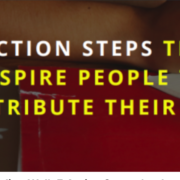Stop wasting your time: use this simple 4-step process to boost the speed and quality of your decision-making
As you know, a simple, effective decision-making process enables you to solve problems, avoid expensive mistakes, and seize opportunities that grow your business.
Here are the four most critical steps in the process.
Think FD3: Frame, Define, Develop, Determine.
1. Frame your decision statement with an action verb, object, and so that.
Clarity on what you are deciding and the purpose of that decision will save you hours of frustration and prevent you from spinning in circles.
“To purchase [verb] a new car [object] so that I can get to work [purpose].”
“To invest in marketing so that my ideal clients know how I serve them.”
2. Define your MUSTS and Wants so that you have clear criteria.
A must is a mandatory requirement that you can measure. Use “so-thats” for clarity.
“A compact car so that it fits in the parking garage.”
“Clear materials so that my ideal clients know the outcomes to expect.”
A want is something you desire but can live without if necessary.
“I want a blue car.”
“I want to invest less than $15,000.”
Rank order your wants, with ten being the most important and one being the least important.
3. Develop your options so that you have alternatives to compare.
You should create at least three viable options so that you do not fixate on the first solution that comes to mind.
You might wind up selecting what your “gut instinct” identifies, but creating options helps you avoid errors that come from what’s known as availability bias – defaulting to a recent, high-profile example that has stuck in your mind.
Advertisers rely on availability bias to influence your choices.
People who cancel airline tickets after a plane crash and decide to drive instead are using a high-profile incident to make a less safe travel choice.
4. Determine your best option by ensuring you’ve met the Musts, and you’ve got the most critical Wants.
Use a simple chart to check off the Musts and tally up the Wants.
The best score wins.
Frame – Define – Develop – Determine (FD3) is a simple, effective process that you can use for any decision you need to make in life and business.
Once you make the decision, you will need to deploy it to your team. We’ll discuss that in another post :0)
How well is this process working for you? Leave a comment below or send me an email: chris@strategicleadersacademy.com











